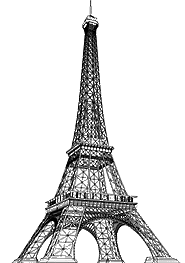Modern mythology
From The Art and Popular Culture Encyclopedia
| Revision as of 10:13, 2 September 2012 Jahsonic (Talk | contribs) ← Previous diff |
Revision as of 10:14, 2 September 2012 Jahsonic (Talk | contribs) Next diff → |
||
| Line 10: | Line 10: | ||
| Mythology is alive and well in the [[modern age]] through [[urban legends]], [[New Age]] beliefs, certain aspects of religion and so forth. In the [[1950s]] [[Roland Barthes]] published a series of essays examining modern myths and the process of their creation in his book ''[[Mythologies (book)|Mythologies]]''. Swiss psychologist [[Carl Jung]] (1873-1961) and his followers also tried to understand the psychology behind world myths. | Mythology is alive and well in the [[modern age]] through [[urban legends]], [[New Age]] beliefs, certain aspects of religion and so forth. In the [[1950s]] [[Roland Barthes]] published a series of essays examining modern myths and the process of their creation in his book ''[[Mythologies (book)|Mythologies]]''. Swiss psychologist [[Carl Jung]] (1873-1961) and his followers also tried to understand the psychology behind world myths. | ||
| - | + | ==In popular culture== | |
| Film and book series like ''[[Star Wars]]'' and ''[[Tarzan]]'' have strong mythological aspects that develop into deep and intricate philosophical systems. These items are not mythology, but contain mythic themes that, for some people, meet the same psychological needs. ''[[Mythopoeia]]'' is a term coined by [[J. R. R. Tolkien]] for the conscious attempt to create myths; his ''[[The Silmarillion|Silmarillion]]'' was to be an example of this, although he did not succeed in bringing it to publication during his lifetime. | Film and book series like ''[[Star Wars]]'' and ''[[Tarzan]]'' have strong mythological aspects that develop into deep and intricate philosophical systems. These items are not mythology, but contain mythic themes that, for some people, meet the same psychological needs. ''[[Mythopoeia]]'' is a term coined by [[J. R. R. Tolkien]] for the conscious attempt to create myths; his ''[[The Silmarillion|Silmarillion]]'' was to be an example of this, although he did not succeed in bringing it to publication during his lifetime. | ||
| - | + | ==The Hero with a Thousand Faces== | |
| - | Also, it is worth mentioning [[Joseph Campbell]]'s ''[[The Hero with a Thousand Faces]]'' (1949), a non-fiction book, and seminal work of [[comparative mythology]]. In this publication, Campbell discusses his theory of the journey of the archetypal hero found in world mythologies. In the [[1950s]], [[Roland Barthes]] published a series of essays examining modern myths and the process of their creation in his book ''[[Mythologies (book)|Mythologies]]''. | + | Also, it is worth mentioning [[Joseph Campbell]]'s ''[[The Hero with a Thousand Faces]]'' (1949), a non-fiction book, and seminal work of [[comparative mythology]]. In this publication, Campbell discusses his theory of the journey of the archetypal hero found in world mythologies. |
| + | ==''Mythologies'' by Barthes== | ||
| + | In the [[1950s]], [[Roland Barthes]] published a series of essays examining modern myths and the process of their creation in his book ''[[Mythologies (book)|Mythologies]]''. | ||
| Also worth mentioning is the [[P-Funk mythology]]. | Also worth mentioning is the [[P-Funk mythology]]. | ||
Revision as of 10:14, 2 September 2012


The status of technocratic icons within contemporary society (the Citroën DS, the Eiffel Tower etc.) is a theme in Roland Barthes's Mythologies
|
Related e |
|
Featured: |
Modern mythology refers to 20th or 21st century mythologies.
Mythology is alive and well in the modern age through urban legends, New Age beliefs, certain aspects of religion and so forth. In the 1950s Roland Barthes published a series of essays examining modern myths and the process of their creation in his book Mythologies. Swiss psychologist Carl Jung (1873-1961) and his followers also tried to understand the psychology behind world myths.
Contents |
In popular culture
Film and book series like Star Wars and Tarzan have strong mythological aspects that develop into deep and intricate philosophical systems. These items are not mythology, but contain mythic themes that, for some people, meet the same psychological needs. Mythopoeia is a term coined by J. R. R. Tolkien for the conscious attempt to create myths; his Silmarillion was to be an example of this, although he did not succeed in bringing it to publication during his lifetime.
The Hero with a Thousand Faces
Also, it is worth mentioning Joseph Campbell's The Hero with a Thousand Faces (1949), a non-fiction book, and seminal work of comparative mythology. In this publication, Campbell discusses his theory of the journey of the archetypal hero found in world mythologies.
Mythologies by Barthes
In the 1950s, Roland Barthes published a series of essays examining modern myths and the process of their creation in his book Mythologies.
Also worth mentioning is the P-Funk mythology.
See also

